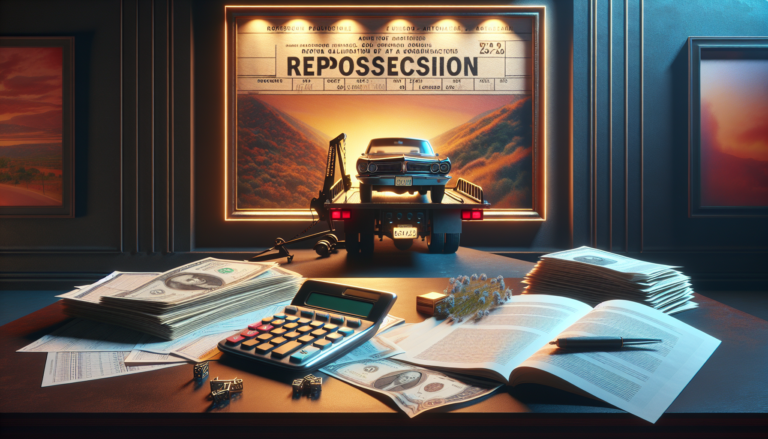Losing your vehicle to repossession can be a stressful and overwhelming experience. When you find yourself in this situation, it’s essential to understand your options and the associated costs to reclaim your car. This guide will provide you with the information you need to navigate the process of getting your vehicle back after repossession.
Understanding Car Repossession
What is Car Repossession?
Car repossession, also known as vehicle repossession, is the process by which a lender takes back possession of a vehicle when the borrower fails to make timely payments according to the loan agreement. This action is legal and is typically outlined in the contract signed when financing a car.
Repossession can occur without warning, as lenders are not obligated to provide notice before taking the vehicle. Once the car is repossessed, the lender will usually sell it at auction to recover the outstanding loan balance.
Reasons for Car Repossession
The primary reason for car repossession is a breach of the loan agreement, most commonly due to missed payments. Other reasons may include:
- Failure to maintain adequate insurance coverage
- Using the vehicle for illegal purposes
- Failing to register the car or pay necessary taxes
It’s crucial to understand the terms of your loan agreement and adhere to them to avoid repossession.
The Repossession Process
The vehicle repossession process typically involves the following steps:
- The borrower defaults on the loan by missing payments or violating the loan agreement.
- The lender hires a repossession company to locate and seize the vehicle.
- The repossession agent takes the car, often without notifying the borrower.
- The lender notifies the borrower of the repossession and provides information on how to reclaim the vehicle.
- The vehicle is sold at auction to recoup the outstanding loan balance.
Understanding the car repossession process can help you take appropriate action if your vehicle is seized.
How Much to Pay to Get Your Car Back After Repo
Understanding Redemption
To redeem your repossessed vehicle, you’ll need to pay the total amount owed on the loan, including any missed payments, late fees, and repo fees. This process is known as the redemption process.
Redemption allows you to reclaim your car and settle your debt with the lender. However, it can be costly, as you’ll need to pay the entire loan balance in one lump sum.
Calculating the Total Cost
To determine how much to pay to get your car back after repo, you’ll need to consider several factors:
- The remaining loan balance
- Any missed payments and late fees
- Repo fees, including towing and storage costs
- Legal fees, if applicable
Contact your lender to get an exact figure for the total amount due. They will provide you with a detailed breakdown of the costs involved in redeeming your vehicle.
Additional Fees and Charges
In addition to the loan balance and missed payments, you may encounter various repo fees and additional charges when trying to reclaim your car:
| Fee Type | Description |
|---|---|
| Towing fees | Charges for transporting your vehicle to the storage facility |
| Storage fees | Daily charges for holding your vehicle at the storage lot |
| Legal fees | Costs associated with the legal process of repossession |
| Reconditioning fees | Charges for cleaning and repairing the vehicle before auction |
These additional costs can add up quickly, so it’s essential to act fast if you intend to redeem your vehicle.
Reinstating Your Loan
What is Loan Reinstatement?
Reinstatement of a loan is an alternative to redemption that allows you to reclaim your vehicle by paying all past due payments, late fees, and repo charges. Unlike redemption, reinstatement doesn’t require you to pay the entire loan balance at once.
To qualify for reinstatement, you must typically act within a specific time frame after repossession, as outlined in your loan agreement. Reinstatement can be a more affordable option for getting your car back compared to redemption.
Steps to Reinstate Your Loan
To reinstate your loan and reclaim your vehicle, follow these steps:
- Contact your lender to discuss reinstatement options and get a total of all past due payments and fees.
- Gather the necessary funds to cover the reinstatement amount.
- Pay the reinstatement amount to your lender, ensuring you obtain proof of payment.
- Arrange with the lender to retrieve your vehicle from the storage facility.
- Continue making regular payments as outlined in your loan agreement to avoid future repossession.
It’s crucial to communicate with your lender throughout the process to ensure a smooth reinstatement of your loan.
Alternatives to Reclaiming Your Vehicle
Negotiating with Your Lender
If you’re unable to afford redemption or reinstatement, negotiating with your lender may provide an alternative solution. Some lenders may be willing to work with you to create a new payment plan or temporarily reduce your payments.
When negotiating with your lender, be honest about your financial situation and provide documentation to support your case. Remember, lenders are more likely to cooperate if you communicate proactively and show a willingness to resolve the issue.
Considering Bankruptcy
In some cases, filing for bankruptcy may help you manage your car repossession. There are two primary types of personal bankruptcy:
- Chapter 7 bankruptcy: This option can discharge most unsecured debts, but you may lose your vehicle if you can’t afford to pay the loan balance.
- Chapter 13 bankruptcy: This type of bankruptcy allows you to create a repayment plan to catch up on missed car payments over a three to five-year period, potentially allowing you to keep your vehicle.
It’s essential to understand the long-term consequences of bankruptcy and consult with a legal professional before pursuing this option.
Seeking Legal Advice
If you believe your rights have been violated during the repossession process or you need help navigating your options, consider seeking legal advice for repossession. A qualified attorney can review your loan agreement, assess your situation, and provide guidance on the best course of action.
Some legal aid organizations offer free or low-cost services for those facing car repossession. Researching these resources in your area can help you access the legal support you need.
Preventing Future Repossession
Tips for Staying Current on Payments
To avoid car repossession in the future, it’s crucial to stay current on your loan payments. Consider the following tips:
- Create a budget to ensure you can afford your monthly car payments.
- Set up automatic payments to avoid missed due dates.
- Prioritize your car payment over less essential expenses.
- If you anticipate difficulty making a payment, contact your lender proactively to discuss options.
By taking a proactive approach to managing your auto loan, you can reduce the risk of repossession and maintain your financial stability.
Communicating with Your Lender
Maintaining open lines of communication with your lender is essential for preventing repossession. If you experience financial hardship or anticipate missing a payment, reach out to your lender immediately.
Many lenders are willing to work with borrowers to create temporary payment plans or modify loan terms to help them avoid car repossession. By being transparent about your situation and actively seeking solutions, you demonstrate your commitment to meeting your financial obligations.
Remember, lenders prefer to receive payments rather than repossess vehicles, so they may be more willing to collaborate with you than you expect. Don’t hesitate to initiate a conversation if you’re facing challenges with your auto loan.
See also:
- When Does Gap Insurance Not Pay? Key Insights and Scenarios
- What Happens If You Don’t Pay a Parking Ticket? Consequences Explained
- What Happens If You Don’t Pay a Toll in Another State?
- How Long Do You Have to Pay Back Restitution? Key Insights and Guidelines
- What Happens If You Don’t Pay a Speeding Ticket? Consequences Explained






